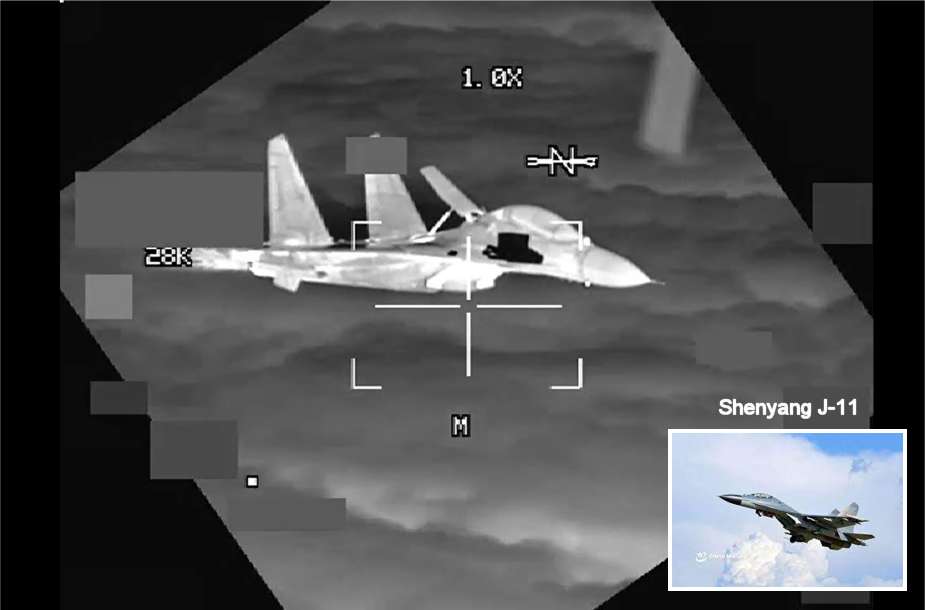On October 24, 2023, a J-11 pilot from the People's Republic of China executed a perilous interception of a U.S. Air Force B-52 aircraft, which was carrying out routine operations in international airspace over the South China Sea. During this nighttime interception, the Chinese pilot displayed unprofessional conduct, approaching the B-52 at an unchecked speed, flying below, ahead, and within just 10 feet of the aircraft, endangering both planes. There are concerns that the pilot seemed unaware of the imminent collision risk.
Follow Air Recognition on Google News at this link
 Chinese Shenyang J-11 air superiority fighter (Picture source: US Indo-Pacific Command)
Chinese Shenyang J-11 air superiority fighter (Picture source: US Indo-Pacific Command)
This action by the PRC was conducted at night, under limited visibility, and in a manner contrary to international air safety standards and rules. Military aircraft, when intentionally approaching another, are expected to operate with aeronautical professionalism and take into account the safety of other aircraft.
The J-11, also known as the Shenyang J-11, is a multi-role fighter jet developed by China, based on the design of the Russian Sukhoi Su-27. First introduced in the 1990s, the J-11 was designed to be a direct competitor to fourth-generation fighters from other nations. Featuring a twin delta-canard wing configuration, it offers superior high-speed maneuverability. Powered by two jet engines, it can achieve supersonic speeds and is armed with a range of weapons, from air-to-air missiles to laser-guided bombs. Over the years, the J-11 has been upgraded, and various models have been introduced to cater to the specific requirements of the Chinese Air Force, especially in terms of air superiority and ground attack.
On the other hand, the B-52, officially known as the Boeing B-52 Stratofortress, is a long-range strategic bomber of the United States. It was first introduced in the 1950s and is one of the oldest aircraft still in active service with the U.S. Air Force. With its iconic eight-engine silhouette and swept wings, the B-52 was designed to carry a substantial amount of munitions over long distances, capable of deploying both nuclear and conventional weapons. Due to its remarkable range and payload capacity, it played a pivotal role during the Cold War as a central component of the American nuclear triad. Even after decades of service, the B-52 continues to undergo upgrades to remain relevant in contemporary combat scenarios, and it is projected to stay in service until at least 2040, reflecting its robust design and operational versatility.
This incident is the latest example of what the Department of Defense outlined in the 2023 China Military Power Report (CMPR) as "dangerous, unprofessional, and other behaviors that seek to impede the ability of the United States and other nations to safely conduct operations where international law allows." This includes over 180 similar interactions since the fall of 2021. On October 17, 2023, the Department released a collection of declassified images and videos illustrating a dangerous pattern of coercive and risky operational behavior by the People's Liberation Army (PLA) against American aircraft operating lawfully in international airspace in the South and East China Sea regions.
















